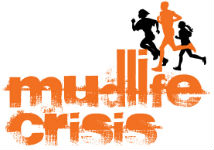It’s sort of funny – every obstacle course race I’ve ever run, I’ve seen new racers who talk about the stuff they wish they had done to prepare for the event, and they are always the same things. Some of these folks are very much people who thought they were in really good shape, but find out that they may not have been. So let’s talk a bit today about the key things that you should be working toward as a new obstacle racer to avoid those mistakes. We’ll have a second post on this topic soon, but this one is just to get you started.
First off, let’s qualify something here: obstacle course races are primarily about one big thing: endurance. Not cardio, mind you, just straight-up endurance. So what’s the difference between cardio and endurance? There are a bunch of people who think these mean the same thing.
Cardio is primarily heart and respiratory health. The words “heart healthy” always seem to go along with exhortations by the experts to go run, bike, swim, etc. more. And there’s no doubt that having a healthy heart and respiratory system is a benefit in life. But… if you’re planning on taking on a physical challenge like an obstacle course race, as well as just live an overall healthy life, there’s more to real endurance than just cardio exercise.
Do you want to avoid common rookie mistakes in your first #OCR? Click To TweetEndurance is the ability of the body to do work over a long period of time. And it’s more than just cardio: it’s muscular endurance. Muscular endurance is the key factor in obstacle course racing – and while cardio is a part of endurance, it’s only that: a part. Muscular endurance has two primary facets that are important to keep in mind.
The ability for your muscles to not fail quickly when doing a task.
The reason that you currently find the monkey bars difficult isn’t only strength – it’s that you can’t maintain that effort long enough to get across all the rungs.
The ability for your muscles to do a task without cramping.
Cramps do not only happen because you haven’t had enough water or taken in enough electrolytes, though that is a common reason. The other major reason your muscles cramp is that they are just plumb overworked. If your body is used to being worked in a specific way, that problem will happen much less often. Read this study for more on cramping.
For this first post on overcoming first-timer mistakes, we’re going to focus primarily on the lower-body challenges of an OCR. So let’s look at the places that I have seen people break down the most during a race, and what you can do to train for each challenge:
1. Hill climbing.
The average hill in an obstacle course race (depending on your location, mind you) is picked out to be a challenge. It’s not meant to simply make things a little harder or to break up the scenery a bit. It’s meant to try to break you. Races like Spartan look for these opportunities specifically because they want you to to be pushed to the limit.
And here’s the catch: most first time racers don’t realize that they haven’t prepared for hill climbing properly by running hills on the streets of their neighborhoods.
Hills in an obstacle course race aren’t long, friendly inclines, made for cars and bikes to be able to get up without too great an effort. There are going to be places where you may be crawling up the hill because of the incline and the terrain. Sometimes the hills will be so steep that the race organizers are going to hang ropes down to help you out.
This is going to put unexpected strain on two specific parts of your body: your lower back and glutes, and your calves and Achilles tendons. You’re going to be bent over more going up hills like this, and you’re going to be flexing your ankles much more than you’re used to. So a key part of getting ready for a race should include finding some real tough, non-paved hills and practicing going up them.
Hill sprints are an awesome way to get ready for this challenge. After a proper full-body warm-up, do this routine:
- Find a hill – preferably unpaved. A hiking trail is a great place to do this.
- Do short full-speed sprints up the hill – 50 yards or so. If you want to increase the distance of your sprint as you get better with them, go for it, but the first time please start with shorter sprints. You’ll feel this the next day, all over the body. I promise you that.
- Do this 5-6 times at full speed is a good workout.
- Walk down the hill after each sprint and get your wind back before you do the next one.
- At the end of your workout, make sure you incorporate some trunk, calf, and ankle stretching into your cool-down.
(This can be a whole workout, by the way. Sprints are awesome for building muscle, but also muscular endurance (they’ll also help the pounds melt off if you do them regularly). There’s a reason you don’t see too many sprinters who don’t look muscular and ripped – it’s amazing exercise.)
If you live in Florida or Kansas and don’t have a lot of hills, and you know your race is going to have hills, then you can substitute sprints with a running parachute or pulling a small tire on a rope around your waist. It’s not quite the same, but it’ll build a lot of the same overall muscular endurance.
Don’t do this more often than once a week, though. Your body will need time to recover from the exertion, and frankly workouts like this (if you are running full-speed) are so effective that you don’t need to do them more often.
2. Terrain running
Another mistake that plagues new racers is the simple fact that these races don’t generally take place on a flat, easy surface. No, your typical OCR is not run on the street – it’s run in nature. And nature is unpredictable, varied, and full of ways that will test your body. Hills, mentioned above, are only one facet of that. You’ve got rocks, tree roots, uneven ground, and more.
The uneven nature of the terrain makes your feet land and push off over-and-over in ways that they’re simply not used to doing. Not only are you running on rocks, roots, etc., but you’re also stepping around and over them – making your feet land in ways that they’re not accustomed to. A person who can run a road 5K in 20 minutes with ease can frequently have their time double or even triple due to the terrain and the obstacles, and feel much more spent afterward. And it’s because they’re simply not used to the variety that their body is called upon to overcome. The fatigue in your muscles during such an unaccustomed effort is a major cause of cramps during a race.
So, assuming you’re running regularly (you are running regularly for your training, right?) you will want to incorporate as much trail running into your routine as possible. Get off the road, in other words. If you run in the city, look for metroparks or hiking trails, as we said above, and run those. Run next to the trail for an added bonus – finding the most challenging terrain there. If you’re in the country and running along the road, run on the shoulder or even next to the shoulder. Challenge those little stabilizer muscles that are all over your joints, keeping your big muscles in line and injury free.
And work into this. Don’t go out and do a five mile trail run if you’re used to doing a five mile road run regularly. Start with a half-mile of trail and finish with four miles of road. When that feels good, do a mile of trail and 3 1/2-4 miles of road work.
3. Start-stop running
Obstacle course races have…well… obstacles. You’re not doing a race that has a lot of long distance, uninterrupted running in it. You’re going to be forced to stop and start, stop and start, etc. on a regular basis in a race.
This sounds like it’d make things easier, but trust me: it’s a lot harder to keep a groove/pace going when you keep stopping to do a crawl, rope climb, wall jump, etc. every quarter mile or more. It’s going to wear your body out a lot faster to work like this.
So prepare for this. Incorporate stopping every couple of minutes to do some calisthenics into your runs. I use an iPhone app called Gymboss (there’s also an Android version) to help me with this – it’s an interval timer app that allows you to set up your own intervals. It basically pings at you when an interval starts or stops, and it’s a great way to set up a 15-30 second interval to do some push-ups, burpees, crawls, etc. in the middle of your runs. Gymboss also has timers you can carry if you’re not a fan of running with a smartphone.
So that’s it for the running portions overcoming new racer mistakes. Next time we’ll look at mistakes that are made in preparing for the obstacles themselves.
What challenges have you had in preparing for your races? Share them below or on our message boards! I’ll set up a topic under Movement just for this.







